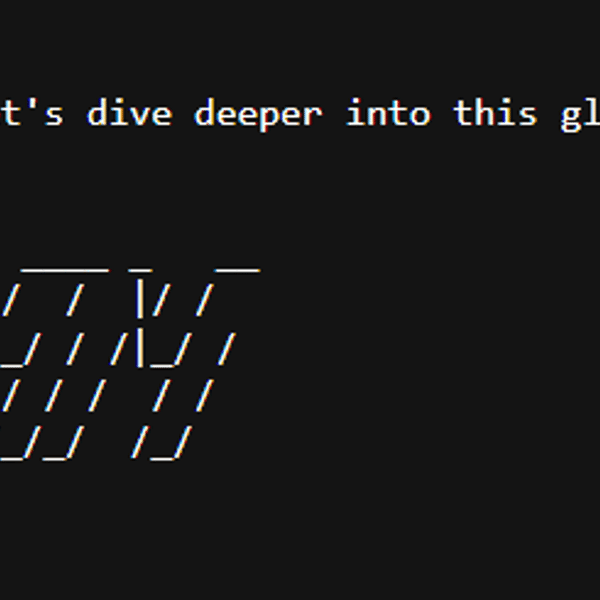Bitget: #4 al mondo per volume di trading giornaliero!
Quota di mercato di BTC59.07%
Commissioni sul gas di ETH ora: 0.1-1 gwei
Bitcoin Rainbow Chart: Accumula
BTC/USDT$87411.01 (-1.77%)Indice Paura & Avidità23(Paura estrema)
Indice Altcoin Season:0(Stagione di Bitcoin)
Flusso netto totale di ETF Spot su Bitcoin +$75.4M (1G); -$1.66B (7G).Pacchetto regalo di benvenuto per i nuovi utenti del valore di 6.200 USDT.Riscatta
Fai trading sempre e ovunque con l'app Bitget.Scarica ora
Bitget: #4 al mondo per volume di trading giornaliero!
Quota di mercato di BTC59.07%
Commissioni sul gas di ETH ora: 0.1-1 gwei
Bitcoin Rainbow Chart: Accumula
BTC/USDT$87411.01 (-1.77%)Indice Paura & Avidità23(Paura estrema)
Indice Altcoin Season:0(Stagione di Bitcoin)
Flusso netto totale di ETF Spot su Bitcoin +$75.4M (1G); -$1.66B (7G).Pacchetto regalo di benvenuto per i nuovi utenti del valore di 6.200 USDT.Riscatta
Fai trading sempre e ovunque con l'app Bitget.Scarica ora
Bitget: #4 al mondo per volume di trading giornaliero!
Quota di mercato di BTC59.07%
Commissioni sul gas di ETH ora: 0.1-1 gwei
Bitcoin Rainbow Chart: Accumula
BTC/USDT$87411.01 (-1.77%)Indice Paura & Avidità23(Paura estrema)
Indice Altcoin Season:0(Stagione di Bitcoin)
Flusso netto totale di ETF Spot su Bitcoin +$75.4M (1G); -$1.66B (7G).Pacchetto regalo di benvenuto per i nuovi utenti del valore di 6.200 USDT.Riscatta
Fai trading sempre e ovunque con l'app Bitget.Scarica ora

I dati provengono da fornitori di terze parti. Questa pagina e le informazioni fornite non supportano alcuna criptovaluta specifica. Vuoi fare trading con le monete listate? Clicca qui
Iscriviti
Previsione del prezzo di Strawberry AI (BERRY)
Non listato
Quanto potrebbe valere Strawberry AI nel 2025, 2026, 2030 e oltre? Qual è il prezzo previsto di Strawberry AI per domani, questa settimana o questo mese? E quale ritorno sugli investimenti potresti ottenere facendo holding di Strawberry AI fino al 2050?
Questa pagina offre strumenti di previsione del prezzo di Strawberry AI a breve e lungo termine, per aiutarti a valutare la futura performance del prezzo di Strawberry AI. Puoi anche impostare le tue previsioni per stimare il valore futuro di Strawberry AI.
È importante sottolineare che, data l'intrinseca volatilità e complessità del mercato delle criptovalute, queste previsioni, pur offrendo indicazioni sui potenziali scenari e intervalli di prezzo, devono essere considerate con cautela e scetticismo.
Questa pagina offre strumenti di previsione del prezzo di Strawberry AI a breve e lungo termine, per aiutarti a valutare la futura performance del prezzo di Strawberry AI. Puoi anche impostare le tue previsioni per stimare il valore futuro di Strawberry AI.
È importante sottolineare che, data l'intrinseca volatilità e complessità del mercato delle criptovalute, queste previsioni, pur offrendo indicazioni sui potenziali scenari e intervalli di prezzo, devono essere considerate con cautela e scetticismo.
Grafico di previsione del prezzo di Strawberry AI per il 2025 e oltre
Previsione del prezzo di Strawberry AI nei prossimi 10 giorni sulla base di un tasso di crescita giornaliero previsto del +0.014%.
Prezzo di oggi (Dec 27, 2025)
$0.01793
Prezzo di domani (Dec 28, 2025)
$0.01793
Prezzo in 5 giorni (Jan 1, 2026)
$0.01794
Prezzo di questo mese (Dec 2025)
$0.01796
Prezzo del mese prossimo (Jan 2026)
$0.01803
Prezzo in 5 mesi (May 2026)
$0.01834
Prezzo nel 2025
$0.01837
Prezzo nel 2026
$0.01929
Prezzo nel 2030
$0.02345
Secondo le previsioni giornaliere a breve termine di Strawberry AI, il prezzo di Strawberry AI dovrebbe risultare $0.01793 in data Dec 27, 2025, $0.01793 in data Dec 28, 2025 e $0.01794 in data Jan 1, 2026. Secondo le previsioni mensili di Strawberry AI, il prezzo di Strawberry AI dovrebbe risultare $0.01796 a Dec 2025, $0.01803 a Jan 2026 e $0.01834 a May 2026. Secondo le previsioni annuali a lungo termine di Strawberry AI, il prezzo di Strawberry AI dovrebbe risultare $0.01837 nel 2025, $0.01929 nel 2026 e $0.02345 nel 2030.
Previsione del prezzo di Strawberry AI per oggi
Il prezzo attuale di Strawberry AI (BERRY) è $0.01848, con una variazione del prezzo in 24 ore di -0.31%. Il prezzo di Strawberry AI (BERRY) dovrebbe raggiungere $0.01793 oggi. Scopri di più su Prezzo di Strawberry AI di oggi.
Previsione del prezzo di Strawberry AI per Dec 2025
Il prezzo di Strawberry AI (BERRY) dovrebbe variare del -55.58% a Dec 2025, e il prezzo di Strawberry AI (BERRY) dovrebbe raggiungere $0.01796 entro la fine di Dec 2025.
Previsione del prezzo di Strawberry AI per il 2025
Il prezzo di Strawberry AI (BERRY) dovrebbe variare del Infinity% nel 2025, e il prezzo di Strawberry AI (BERRY) raggiungerà $0.01837 entro la fine del 2025.
Previsione del prezzo di Strawberry AI a lungo termine: 2026, 2030, 2035, 2040, 2050
Quello che segue è un modello di previsione del prezzo di Strawberry AI basato su un tasso di crescita fisso. Il quale ignora l'impatto delle fluttuazioni del mercato, dei fattori economici esterni o delle emergenze, concentrandosi invece sull'andamento medio dei prezzi di Strawberry AI. Aiuta gli investitori ad analizzare e calcolare rapidamente il potenziale di profitto derivante dall'investimento in Strawberry AI.
Inserisci il tasso di crescita annuale previsto per il prezzo di Strawberry AI e scopri come cambierà il valore di Strawberry AI in futuro.
Inserisci il tasso di crescita annuale previsto per il prezzo di Strawberry AI e scopri come cambierà il valore di Strawberry AI in futuro.
Previsione del prezzo annuale di Strawberry AI basata sul tasso di crescita annuale previsto di 5%
%
Crescita annuale prevista. Inserisci una percentuale compresa tra -100% e +1000%.
| Anno | Prezzo previsto | ROI totale |
|---|---|---|
2026 | $0.01929 | +5.00% |
2027 | $0.02025 | +10.25% |
2028 | $0.02127 | +15.76% |
2029 | $0.02233 | +21.55% |
2030 | $0.02345 | +27.63% |
2035 | $0.02993 | +62.89% |
2040 | $0.03819 | +107.89% |
2050 | $0.06221 | +238.64% |
Sulla base di un tasso di crescita annuale di 5%, il prezzo di Strawberry AI (BERRY) dovrebbe raggiungere $0.01929 nel 2026, $0.02345 nel 2030,$0.03819 nel 2040 e $0.06221 nel 2050.
Previsione del prezzo di Strawberry AI per il 2026
Nel 2026, sulla base di un tasso di crescita annuale di 5%, il prezzo di Strawberry AI (BERRY) dovrebbe raggiungere $0.01929. Sulla base di questa previsione, il ritorno sugli investimenti cumulativo derivante dall’holding di Strawberry AI fino alla fine del 2026 sarebbe 5.00%.
Previsione del prezzo di Strawberry AI per il 2030
Nel 2030, sulla base di un tasso di crescita annuale di 5%, il prezzo di Strawberry AI (BERRY) dovrebbe raggiungere $0.02345. Sulla base di questa previsione, il ritorno sugli investimenti cumulativo derivante dall’holding di Strawberry AI fino alla fine del 2030 sarebbe 27.63%.
Previsione del prezzo di Strawberry AI per il 2035
Nel 2035, sulla base di un tasso di crescita annuale di 5%, il prezzo di Strawberry AI (BERRY) dovrebbe raggiungere $0.02993. Sulla base di questa previsione, il ritorno sugli investimenti cumulativo derivante dall�’holding di Strawberry AI fino alla fine del 2035 sarebbe 62.89%.
Previsione del prezzo di Strawberry AI per il 2040
Nel 2040, sulla base di un tasso di crescita annuale di 5%, il prezzo di Strawberry AI (BERRY) dovrebbe raggiungere $0.03819. Sulla base di questa previsione, il ritorno sugli investimenti cumulativo derivante dall’holding di Strawberry AI fino alla fine del 2040 sarebbe 107.89%.
Previsione del prezzo di Strawberry AI per il 2050
Nel 2050, sulla base di un tasso di crescita annuale di 5%, il prezzo di Strawberry AI (BERRY) dovrebbe raggiungere $0.06221. Sulla base di questa previsione, il ritorno sugli investimenti cumulativo derivante dall’holding di Strawberry AI fino alla fine del 2050 sarebbe 238.64%.
Quanto guadagnerai con i tuoi Strawberry AI?
Se investi $100 in Strawberry AI quest'anno e holdi fino al 2026, la previsione del prezzo indica un potenziale profitto di $5, con un ROI di 5.00%. (Le commissioni non sono incluse in questa stima).
Esclusione di responsabilità: questo non è un consiglio di investimento. Le informazioni fornite sono solo a scopo informativo generale. Nessuna informazione, materiale, servizio o altro contenuto fornito in questa pagina costituisce una sollecitazione, raccomandazione, approvazione o qualsiasi tipo di consulenza finanziaria, di investimento o di altro tipo. Prima di prendere qualsiasi decisione d'investimento, è importante richiedere un parere professionale indipendente sotto forma di consulenza legale, finanziaria e fiscale.
Tabella delle previsioni del prezzo di Strawberry AI a breve termine
Previsione giornaliera del prezzo di Strawberry AI basata sulla crescita giornaliera prevista di 0.014%.
Qual è la previsione del prezzo di Strawberry AI per domani, tra 5 giorni, tra 10 giorni e oltre?%
Crescita giornaliera prevista. Inserisci una percentuale compresa tra -100% e +1000%.
| Data | Prezzo previsto | ROI totale |
|---|---|---|
Dec 28, 2025 (Domani) | $0.01793 | +0.01% |
Dec 29, 2025 | $0.01793 | +0.03% |
Dec 30, 2025 | $0.01794 | +0.04% |
Dec 31, 2025 | $0.01794 | +0.06% |
Jan 1, 2026 (5 giorni dopo) | $0.01794 | +0.07% |
Jan 2, 2026 | $0.01794 | +0.08% |
Jan 3, 2026 | $0.01795 | +0.10% |
Jan 4, 2026 | $0.01795 | +0.11% |
Jan 5, 2026 | $0.01795 | +0.13% |
Jan 6, 2026 (10 giorni dopo) | $0.01795 | +0.14% |
Sulla base di un tasso di crescita giornaliero di 0.014%, si prevede che il prezzo di Strawberry AI (BERRY) raggiunga $0.01793 in data Dec 28, 2025, $0.01794 Jan 1, 2026 e $0.01795 Jan 6, 2026.
Previsione del prezzo di Strawberry AI per il Dec 28, 2025
Sulla base del tasso di crescita giornaliero di 0.014% per la previsione del prezzo di Strawberry AI, il valore stimato di 1 Strawberry AI sarà $0.01793 in data Dec 28, 2025 (Domani). Il ROI previsto dall'investimento e dall'holding di Strawberry AI fino alla fine del giorno Dec 28, 2025 è di 0.01%.
Previsione del prezzo di Strawberry AI per il Jan 1, 2026
Sulla base del tasso di crescita giornaliero di 0.014% per la previsione del prezzo di Strawberry AI, il valore stimato di 1 Strawberry AI sarà $0.01794 in data Jan 1, 2026 (5 giorni dopo). Il ROI previsto dall'investimento e dall'holding di Strawberry AI fino alla fine del giorno Jan 1, 2026 è di 0.07%.
Previsione del prezzo di Strawberry AI per il Jan 6, 2026
Sulla base del tasso di crescita giornaliero di 0.014% per la previsione del prezzo di Strawberry AI, il valore stimato di 1 Strawberry AI sarà $0.01795 in data Jan 6, 2026 (10 giorni dopo). Il ROI previsto dall'investimento e dall'holding di Strawberry AI fino alla fine del giorno Jan 6, 2026 è di 0.14%.
Previsione mensile del prezzo di Strawberry AI basata sulla crescita mensile prevista di 0.42%.
Qual è la previsione del prezzo di Strawberry AI per il prossimo mese, i prossimi 5 mesi, i prossimi 10 mesi e oltre?%
Crescita mensile prevista. Inserisci una percentuale compresa tra -100% e +1000%.
| Data | Prezzo previsto | ROI totale |
|---|---|---|
Jan 2026 (Il mese prossimo) | $0.01803 | +0.42% |
Feb 2026 | $0.01811 | +0.84% |
Mar 2026 | $0.01819 | +1.27% |
Apr 2026 | $0.01826 | +1.69% |
May 2026 (5 mesi dopo) | $0.01834 | +2.12% |
Jun 2026 | $0.01842 | +2.55% |
Jul 2026 | $0.01849 | +2.98% |
Aug 2026 | $0.01857 | +3.41% |
Sep 2026 | $0.01865 | +3.84% |
Oct 2026 (10 mesi dopo) | $0.01873 | +4.28% |
Sulla base di un tasso di crescita mensile di 0.42%, si prevede che il prezzo di Strawberry AI (BERRY) raggiunga $0.01803 nel mese di Jan 2026, $0.01834 nel mese di May 2026 e $0.01873 nel mese di Oct 2026.
Previsione del prezzo di Strawberry AI per il Jan 2026
Sulla base di un tasso di crescita mensile di 0.42%, il prezzo previsto di Strawberry AI (BERRY) nel mese di Jan 2026 (Il mese prossimo) è di $0.01803. Il ROI previsto dall'investimento e dall'holding di Strawberry AI fino alla fine del giorno Jan 2026 è di 0.42%.
Previsione del prezzo di Strawberry AI per il May 2026
Sulla base di un tasso di crescita mensile di 0.42%, il prezzo previsto di Strawberry AI (BERRY) nel mese di May 2026 (5 mesi dopo) è di $0.01834. Il ROI previsto dall'investimento e dall'holding di Strawberry AI fino alla fine del giorno May 2026 è di 2.12%.
Previsione del prezzo di Strawberry AI per il Oct 2026
Sulla base di un tasso di crescita mensile di 0.42%, il prezzo previsto di Strawberry AI (BERRY) nel mese di Oct 2026 (10 mesi dopo) è di $0.01873. Il ROI previsto dall'investimento e dall'holding di Strawberry AI fino alla fine del giorno Oct 2026 è di 4.28%.

Articoli di tendenza sulle previsioni dei prezzi delle criptovalute

What Is Audiera (BEAT)? The Evolution of Rhythm Games in GameFi
From arcade dance machines to competitive online rhythm games, music driven gameplay has always thrived on energy, timing, and community. Today, blockchain technology is giving this genre an entirely new dimension by turning participation and creativity into on-chain value. As GameFi evolves beyond basic reward systems, rhythm games are emerging as a natural fit for Web3, where skill, performance, and digital ownership can coexist.
Audiera (BEAT) represents this transition by bringing the rhythm and dance game experience into a decentralized, crypto powered ecosystem. Developed as the Web3 continuation of the globally recognized Audition franchise, Audiera blends music gameplay, artificial intelligence, and blockchain incentives into a single platform. Players are no longer just consumers of content but active contributors to a growing creator economy. In this article, we examine what Audiera (BEAT) is, how the platform operates, its tokenomics structure, and what its long term potential may look like within the expanding GameFi landscape.
What Is Audiera (BEAT)?
Audiera is a Web3 music and gaming platform that reimagines the rhythm and dance game genre through blockchain technology. Inspired by the globally successful Audition franchise, Audiera brings competitive music based gameplay into a decentralized environment where players interact through dance battles, social features, and immersive virtual spaces. Built for a new generation of digital entertainment, the platform combines familiar rhythm game mechanics with modern Web3 concepts such as digital ownership and community driven participation.
Rather than existing as a closed gaming system, Audiera is designed as an open ecosystem that encourages creativity and long term engagement. Players can perform, compete, and socialize while also contributing content to the platform through music creation, avatar customization, and interactive experiences powered by artificial intelligence. By blending rhythm gaming with AI and blockchain infrastructure, Audiera positions itself as an evolution of traditional dance games into a more dynamic and participatory GameFi experience.
How Audiera (BEAT) Works
Audiera combines rhythm based gameplay, artificial intelligence, and blockchain infrastructure to deliver an interactive GameFi experience. At its core, the platform functions like a modern rhythm and dance game, but it extends far beyond traditional gameplay by rewarding participation, creativity, and social engagement within a decentralized ecosystem.
At the gameplay level, users participate in music driven dance challenges where performance and timing determine success. Players control avatars that perform choreographed routines synced to music, competing in solo modes, social rooms, and competitive events. Audiera supports both mobile gameplay and physical interaction through compatible smart dance mats, allowing real world movement to translate directly into in game performance.
Key components of how Audiera works include:
Rhythm Based Gameplay: Players complete dance challenges and competitions by matching inputs to music tracks, earning scores based on accuracy, timing, and consistency.
AI Powered Music Creation: Users can generate original music using AI driven creative tools, enabling them to produce tracks that can be played in game or shared with the community.
Virtual AI Idols and Social Interaction: AI powered characters interact with users, generate personalized content, and help drive ongoing engagement within the ecosystem.
Multi Platform Access: Audiera operates through a full mobile game alongside lighter social and messaging based integrations, lowering entry barriers and expanding reach.
Blockchain Enabled Infrastructure: Blockchain technology supports asset ownership, transparent rewards, and content attribution while remaining largely invisible to the end user.
Together, these elements allow Audiera to function as more than a game. It becomes a living ecosystem where gameplay, creativity, and social participation continuously reinforce each other within a GameFi framework.
Audiera (BEAT) Tokenomics
Audiera (BEAT) Token Allocation
The BEAT token is the core utility asset that powers the Audiera ecosystem, supporting gameplay rewards, content creation, and community participation. Built on BNB Smart Chain, BEAT benefits from fast transaction speeds and low fees, making it suitable for a high frequency gaming environment. The token is designed to facilitate real platform usage, with demand driven by player activity, creator tools, and ecosystem services rather than purely speculative trading.
BEAT has a fixed maximum supply of 1 billion tokens, with only a portion currently in circulation and the remainder released gradually through long term vesting schedules. A large share of the supply is allocated to community rewards and ecosystem development, while team and early contributor allocations are locked with extended cliffs to reduce sell pressure. Audiera also incorporates deflationary mechanisms such as token buybacks and burns funded by platform revenue, aiming to balance emissions from gameplay rewards and support long term economic sustainability.
Audiera (BEAT) Price Prediction for 2025, 2026–2030
Audiera (BEAT) Price
Source: CoinMarketCap
At the time of writing, BEAT is trading at approximately $4.40, following a strong surge driven by early adoption, exchange listings, and growing interest in GameFi and AI powered crypto projects. From this level, future price performance will depend on Audiera’s ability to expand its user base, sustain token utility, and navigate broader market cycles. The projections below represent scenario based estimates rather than guarantees.
2025 Price Prediction: After its initial rally, BEAT is expected to enter a consolidation phase. If Audiera continues to deliver product updates and maintain active engagement, BEAT could trade in the $5.00 to $7.00 range, supported by steady platform usage and controlled token emissions.
2026 Price Prediction: With deeper ecosystem adoption and expanded creator participation, BEAT may benefit from increasing demand. Under favorable market conditions, a price range of $7.00 to $10.00 becomes plausible as the platform matures.
2027 Price Prediction: If Audiera establishes itself as a leading rhythm based GameFi platform, BEAT could see continued upward momentum. In this scenario, prices in the $10.00 to $14.00 range may be achievable, driven by compounding user growth and sustained token utility.
2028 Price Prediction: As the ecosystem scales and additional revenue streams emerge, BEAT could move into the $12.00 to $18.00 range, assuming deflationary mechanisms and long term engagement offset token unlocks.
2029–2030 Price Prediction: Over the longer term, a bullish scenario in which Audiera becomes a major player in blockchain gaming could push BEAT toward $18.00 to $25.00 or higher. These levels would depend on strong execution, favorable market conditions, and continued relevance within the evolving GameFi sector.
These projections are inherently speculative and should be viewed as illustrative scenarios based on current conditions rather than precise forecasts.
Conclusion
Audiera (BEAT) highlights how GameFi is evolving beyond simple play to earn mechanics into more immersive and creator driven ecosystems. By combining rhythm based gameplay, artificial intelligence, and blockchain infrastructure, Audiera transforms a familiar gaming genre into a decentralized platform where users can play, create, and participate in a shared digital economy. Its roots in a well established rhythm game franchise give it cultural relevance, while its Web3 architecture introduces new models of ownership and engagement.
From a broader perspective, Audiera represents a shift toward sustainability in GameFi, where long term user participation and utility are prioritized over short term speculation. The platform’s focus on content creation, social interaction, and token utility positions it differently from earlier generations of blockchain games. While BEAT’s future performance will ultimately depend on execution, adoption, and market conditions, Audiera offers a compelling example of how rhythm games can evolve into multi layered crypto ecosystems. For investors and observers alike, it stands as a notable case study in the ongoing convergence of gaming, AI, and blockchain technology.
Disclaimer: The opinions expressed in this article are for informational purposes only. This article does not constitute an endorsement of any of the products and services discussed or investment, financial, or trading advice. Qualified professionals should be consulted prior to making financial decisions.
Bitget Academy2025-12-22 15:04

Trump Media Stock: Comprehensive Guide to Latest Announcements, Strategic Shifts, AI Power Play, Stock Performance, and 2025-2026 Price Predictions
Trump Media & Technology Group (TMTG), the parent company of Truth Social and trading under the ticker DJT, has captured significant market and media attention—not only due to its high-profile connections but also for its rapid and bold strategic shifts in 2025. Amid a volatile year for its stock and evolving business model, TMTG’s dramatic new direction was unveiled with a planned $6+ billion merger with TAE Technologies, a pioneering private fusion energy firm. This move signals TMTG’s ambitions to extend beyond social media and cryptocurrency reserves, targeting future growth in the AI infrastructure and energy space.
This guide explores the details of the deal, TMTG’s business transformation, its alignment with AI-driven energy needs, the company’s rocky stock price journey, expert perspectives, and potential future scenarios for DJT stock.
Source: Google Finance
The Deal: TMTG-TAE $6+ Billion Merger Explained
In December 2025, Trump Media & Technology Group announced an all-stock merger agreement with TAE Technologies, valuing the deal at over $6 billion. Under the terms:
The merged entity will have equal ownership: current TMTG and TAE shareholders will each own about 50%.
TMTG will provide up to $200 million in cash to TAE soon after signing, with an additional $100 million after filing regulatory paperwork (Form S-4).
The newly combined company will plan, by year-end 2026, to gain approval for and begin siting the first utility-scale fusion power plant.
Leadership will be shared by TMTG CEO Devin Nunes and TAE CEO Michl Binderbauer as co-CEOs, with board seats reflecting the shared ownership.
TAE Technologies, headquartered in California and backed by major investors like Google, Chevron, and Goldman Sachs, is a fusion energy developer that claims to have built and operated five fusion reactors, achieving important scientific breakthroughs in nuclear energy.
Trump Media’s Strategic Shift: Beyond Social Media and Crypto
When TMTG launched in 2021, its mission was clear: create a conservative-friendly alternative to mainstream social media with Truth Social. However, since going public in March 2024 through a high-profile SPAC merger (via Digital World Acquisition Corp.), TMTG’s revenue has stagnated—even as operating costs soared.
Faced with the persistent underperformance of its core Truth Social business and immense competition from the likes of X (Twitter) and Bluesky, TMTG began bold diversification:
Venture into Cryptocurrencies: In 2024, TMTG raised over $2.5 billion to directly purchase Bitcoin, building a crypto reserve reminiscent of MicroStrategy’s playbook.
America-First Investment Funds: Launch of investment products emphasizing national interests.
Strategic Transformation: The TAE merger further shifts TMTG’s identity from digital media towards critical infrastructure, green energy, and AI enablement ([AP, Reuters]).
Post-merger, TMTG will become a holding company for its social media ventures (Truth Social, Truth+, Truth.Fi) and TAE’s portfolio (including TAE Power Solutions and TAE Life Sciences). This diversification is designed to future-proof the business and open new paths to profitability as the global energy market and AI sector expand.
Why Targeting AI Power? Energy and Fusion: The American Edge
The AI revolution, much like Bitcoin’s explosive growth, is power-hungry. According to Deloitte, America's AI data center electricity demand could surge thirtyfold, reaching 123 gigawatts by 2035 (from 4 GW in 2023). Traditional grids are already stretched; clean, reliable fusion energy could be pivotal for continued AI dominance.
As stated by TMTG CEO Devin Nunes, “Fusion power will lower energy prices, bolster our national defense and secure the energy needed to guarantee America’s dominance of AI technology.” Michl Binderbauer, TAE CEO, says their breakthroughs mean they are “ready to solve the global energy challenge and fundamentally change America’s energy mix.”
The aim? To use public markets and a high-visibility brand to accelerate the deployment and commercialization of fusion energy, making the U.S. a global leader in AI-era energy solutions ([Reuters], [Bloomberg], [AP News]).
TMTG (DJT) Stock Performance Over the Year
Trump Media & Technology Group’s public trading journey has been notably volatile:
Initial Public Hype: Upon the March 2024 SPAC debut, DJT stock soared on speculation and meme-stock energy.
Steep Decline: By December 2024, shares had plunged nearly 70% from their peak, vastly underperforming the broader S&P 500, which rose 14% in the same period.
Financial Losses: Despite heavy investment, TMTG saw quarterly net sales under $1 million and lost $55 million in three months ending September 30, 2025, remaining highly unprofitable.
Merger News Rally: The TAE merger announcement caused a dramatic rebound: DJT shares surged 32%–42% in a single day, peaking at $13.84. Nonetheless, this is still substantially below its all-time high after IPO ([AP News], [Reuters], [Fortune]).
Additional volatility has resulted from TMTG’s crypto moves, as Bitcoin reserves added exposure to the broader digital asset market boom and bust cycles. After accumulating $1.3 billion in Bitcoin, the subsequent crypto downturn negatively affected the company’s book value.
Trump Media Stock (DJT) Price Prediction
The future price trajectory for DJT shares is highly speculative and wrapped in uncertainty:
Growth Levers: If TAE Technologies delivers a successful commercial fusion energy solution—and demand for AI-related energy remains robust—TMTG could see material upside, attracting speculative and institutional capital.
Risks: Fusion energy is technically unproven at scale, with uncertain timelines and high capital intensity. TMTG’s legacy business is not reliably profitable. Exposure to Bitcoin and cryptocurrency also increases risk.
Analyst Views: The market’s swift reaction to the TAE deal shows investor enthusiasm for TMTG’s transformation. However, until commercialization is proven and revenue grows, DJT may remain a highly volatile, news-driven stock. Price swings of 30–40% on headlines are likely, with the potential for both outsized rallies and severe drawdowns.
Consensus: Near-term, expect ongoing high volatility; mid- to long-term upside is dependent on fusion technology development, regulatory approvals, and the firm’s ability to scale new revenue streams. Investors should exercise significant caution.
Conclusion
Trump Media & Technology Group is moving far beyond its origins as a social media platform, aggressively targeting the next generation’s biggest problems: energy and AI scalability. The $6+ billion merger with TAE Technologies is a strategic pivot to cut a path into the fusion energy business—the keystone energy source for tomorrow's AI infrastructure.
While the stock has been battered through 2025, renewed optimism has returned with the fusion merger. Still, the path to profitability and technological success is lengthy and uncertain. DJT stock is best described as a high-risk, high-reward play linked to both the fortunes of fusion energy and the evolution of U.S. tech infrastructure—making it a compelling ticker to monitor for those interested in the intersection of media, crypto, and cutting-edge energy.
Disclaimer: The opinions expressed in this article are for informational purposes only. This article does not constitute an endorsement of any of the products and services discussed or investment, financial, or trading advice. Qualified professionals should be consulted prior to making financial decisions.
Bitget Academy2025-12-19 10:55

Bitcoin Price Today: BTC Falls Below $87,000 as U.S. Unemployment Hits a Four-Year High
Bitcoin’s price moved sharply lower today after fresh U.S. labor market data signaled growing economic stress. The world’s largest cryptocurrency briefly fell to around $85,300, its lowest level in roughly two weeks, before stabilizing near the $87,000 range. The decline followed the release of a closely watched U.S. jobs report showing that the unemployment rate rose to 4.6%, the highest level in four years. The data triggered a cautious, risk-off reaction across financial markets, weighing on cryptocurrencies alongside stocks and other high-risk assets.
For many investors, especially beginners, the link between unemployment figures and Bitcoin’s price may not be immediately obvious. However, macroeconomic indicators like jobs data play a crucial role in shaping expectations around interest rates, monetary policy, and overall market confidence. Rising unemployment can signal a slowing economy, prompting investors to reduce exposure to volatile assets such as Bitcoin. At the same time, weaker labor conditions may eventually push the U.S. Federal Reserve toward looser monetary policy, which has historically been supportive of crypto markets. This dynamic tension helps explain why Bitcoin is experiencing heightened volatility as traders reassess both near-term risks and longer-term opportunities.
Latest Bitcoin Price Update
Bitcoin (BTC) Price
Source: CoinMarketCap
Bitcoin is trading under pressure as markets digest the latest macroeconomic signals. At the time of writing, BTC is hovering around the $86,000–$88,000 range, after experiencing a sharp intraday drop earlier in the session. The price briefly fell to approximately $85,300, marking its lowest level in nearly two weeks, before buyers stepped in to limit further losses. Despite the rebound, Bitcoin remains down about 1–2% on the day, reflecting persistent caution among traders.
On a broader scale, Bitcoin’s recent pullback has erased much of its earlier momentum. The cryptocurrency has now slipped into negative territory for the year, wiping out gains accumulated during its strong rally in previous months. Bitcoin’s market capitalization stands at roughly $1.7 trillion, while 24-hour trading volume has surged, a sign of heightened volatility and active repositioning by investors. Elevated volume during price declines often indicates uncertainty, as traders reassess risk and adjust portfolios in response to new economic data.
Zooming out to the weekly trend, Bitcoin has been gradually trending lower after failing to hold key psychological levels above $90,000. Analysts note that BTC is currently consolidating near important support zones, with $85,000 acting as a short-term floor. While the longer-term structure remains intact, short-term momentum has weakened, largely due to macroeconomic headwinds rather than crypto-specific news. This suggests that Bitcoin’s current price action is being driven more by global economic sentiment than by changes within the blockchain or digital asset ecosystem itself.
U.S. Unemployment Data Overview
United States Unemployment Rate
Source: U.S. Bureau of Labor Statistics
The latest pressure on Bitcoin followed the release of new U.S. labor market data showing a notable rise in unemployment. According to the most recent government report, the U.S. unemployment rate climbed to 4.6% in November, marking its highest level in four years. The figure exceeded market expectations and signaled a cooling labor market after a prolonged period of strength. While the headline number remains relatively low by historical standards, the upward trend has raised concerns that economic momentum in the United States may be slowing.
Digging deeper into the report reveals a mixed picture. U.S. employers added approximately 64,000 jobs in November, beating economists’ forecasts but failing to offset the sharp job losses recorded in October, when payrolls fell by more than 100,000 positions due largely to government layoffs. In addition, a broader measure of unemployment — which includes underemployed workers and those marginally attached to the labor force — rose to 8.7%, also the highest level since 2021. Together, these figures suggest that while hiring has not collapsed, job security and labor participation are weakening.
For financial markets, the implications are significant. Rising unemployment typically increases fears of an economic slowdown or recession, prompting investors to shift away from riskier assets such as equities and cryptocurrencies. At the same time, softer labor conditions can influence expectations around U.S. Federal Reserve policy, as prolonged weakness may force policymakers to support the economy through lower interest rates. This dual interpretation — economic risk versus potential monetary easing — has created uncertainty across markets, contributing directly to the volatility seen in Bitcoin following the report.
Market Reaction: Crypto and Beyond
Financial markets responded swiftly to the weaker-than-expected U.S. labor data, with cryptocurrencies among the first assets to feel the impact. Bitcoin’s sharp intraday drop reflected a broader risk-off move, as investors reduced exposure to volatile assets amid concerns about slowing economic growth. Major altcoins followed a similar pattern, with Ethereum and other large-cap cryptocurrencies posting losses as sentiment across the digital asset market turned cautious.
The reaction was not limited to crypto. U.S. equity markets, particularly technology and growth stocks, also faced renewed selling pressure. Bitcoin has increasingly traded in correlation with tech stocks, and recent declines in global equities have reinforced that relationship. Investors appear to be reassessing valuations after months of optimism driven by artificial intelligence growth and expectations of looser monetary policy. As stocks weakened, Bitcoin mirrored the downturn, highlighting its growing integration into the broader financial ecosystem.
Despite the initial sell-off, markets showed signs of stabilization as traders digested the full labor report. The fact that job growth remained positive, albeit modest, helped prevent panic selling. At the same time, expectations for immediate interest rate cuts by the U.S. Federal Reserve remained largely unchanged, limiting extreme market reactions. This recalibration led to a partial recovery in both equities and crypto prices, suggesting that while sentiment has turned more cautious, investors are not yet pricing in a severe economic downturn. For Bitcoin, this has translated into heightened volatility rather than a full-scale breakdown, as the market waits for clearer signals from upcoming inflation data and central bank guidance.
BTC Price Prediction: Can Bitcoin Reclaim the $100,000 Mark by Year-End?
With Bitcoin now trading well below recent highs, a key question for investors is whether BTC can regain momentum and eventually reclaim the $100,000 level. While the recent pullback has dampened short-term optimism, many analysts argue that the broader conditions needed for a renewed rally remain intact. From a technical perspective, Bitcoin’s current consolidation near the $85,000–$88,000 range suggests the market is searching for a stable base rather than entering a full bearish reversal. As long as BTC holds above major support near $85,000, the longer-term bullish structure is considered unbroken.
From a macroeconomic standpoint, Bitcoin’s path back toward $100,000 is closely tied to U.S. monetary policy. Historically, periods of lower interest rates and increased liquidity have been highly favorable for crypto assets. While the Federal Reserve is not expected to cut rates aggressively in the immediate term, the recent rise in unemployment strengthens the case for a more accommodative policy stance in 2026. If labor market weakness persists without triggering a deep recession, the Fed may move toward further rate cuts—an environment that has previously supported strong Bitcoin rallies.
Market sentiment data also points to continued confidence in Bitcoin’s upside potential. On crypto prediction markets, traders currently assign a clear majority probability that Bitcoin will reach $100,000 before revisiting significantly lower levels, reflecting belief in the asset’s long-term trajectory. Institutional interest remains another supportive factor, with spot Bitcoin investment products and growing regulatory clarity improving access for traditional investors. While short-term volatility is likely to continue, especially as macroeconomic data remains mixed, many analysts view the $100,000 mark as a realistic medium-term target rather than an outlier scenario.
That said, risks remain. A sharper-than-expected economic slowdown, renewed inflation pressures, or sudden tightening of financial conditions could delay or derail Bitcoin’s recovery. As a result, any move back toward six-figure prices is unlikely to be linear. Instead, Bitcoin’s journey toward $100,000 will likely involve periods of consolidation, pullbacks, and renewed volatility as markets respond to economic data and central bank signals.
Conclusion
Bitcoin’s latest pullback highlights how sensitive the cryptocurrency market has become to macroeconomic signals. The rise in U.S. unemployment to a four year high of 4.6 percent has weighed on investor confidence, prompting a shift away from risk assets and pushing Bitcoin lower after it struggled to hold above the 90,000 level. This reaction reflects broader uncertainty across global markets, where concerns about economic growth are beginning to outweigh the optimism that fueled earlier rallies.
At the same time, the bigger picture remains far from settled. A cooling labor market could ultimately pave the way for looser monetary policy, an environment that has historically supported Bitcoin’s long term growth. Whether BTC can regain momentum and move closer to the 100,000 mark by year end will depend on upcoming economic data, central bank decisions, and investor sentiment. As markets enter the final stretch of the year, the question remains whether this period of weakness is a warning sign or simply the calm before Bitcoin’s next major move.
Disclaimer: The opinions expressed in this article are for informational purposes only. This article does not constitute an endorsement of any of the products and services discussed or investment, financial, or trading advice. Qualified professionals should be consulted prior to making financial decisions.
Bitget Academy2025-12-17 06:25

What Is Magma Finance (MAGMA)? MAGMA Airdrop, Tokenomics, and What Might Happen to the Price Post-Launch
Decentralized finance has made incredible progress in recent years, but one issue continues to frustrate traders and liquidity providers alike: capital inefficiency. Many automated market makers still rely on outdated mechanics that scatter liquidity too thinly, cause high slippage during trades, and require constant manual adjustments from users. As a result, most liquidity providers are stuck with underperforming positions while traders suffer from unpredictable execution prices. This is especially true on newer blockchains like Sui, where liquidity is still shallow and fragmented across protocols.
Magma Finance wants to change that. Founded in 2025, it introduces an AI-powered liquidity engine that promises smarter, more adaptive trading infrastructure on the Sui network. Its native token, MAGMA, is debuting on exchanges like Bitget and Binance Alpha, where users can also participate in a time-limited airdrop campaign. In this article, we’ll explore what Magma Finance is, how it works, how the tokenomics are structured, everything you should know about the MAGMA airdrop, and what could happen to the token price after launch.
What Is Magma Finance (MAGMA)?
Magma Finance is a decentralized, non-custodial liquidity protocol built on the Sui blockchain. It positions itself as a next-generation decentralized exchange (DEX) that uses artificial intelligence to manage liquidity more efficiently than traditional models. Unlike conventional AMMs that passively hold user deposits across wide price ranges, Magma Finance concentrates capital into specific trading zones, dynamically adjusting positions using an off-chain AI strategy engine. The goal is simple: reduce slippage for traders and maximize returns for liquidity providers, all while automating the entire process.
At its core, Magma Finance is solving a very real problem in DeFi: liquidity fragmentation and idle capital. On most DEXs, liquidity is spread thinly across many price points, and when the market moves, a large portion of that capital becomes inactive and stops generating fees. Magma addresses this by creating “adaptive liquidity bins” and continuously reallocating funds to keep them within active trading zones. It even adjusts swap fees in real time based on market volatility, rewarding liquidity providers during periods of high risk and keeping the protocol competitive during quiet market conditions.
Beyond the tech, Magma Finance is also structured to be community-driven. It implements a ve(3,3) tokenomics model, meaning that users who lock their MAGMA tokens receive voting power and a share of protocol emissions. This model aligns long-term incentives for all participants—LPs, token holders, and builders—by encouraging cooperation and active governance. With over $6 million raised from leading venture firms and recognition from the Sui Foundation’s hackathon, Magma is entering the market not just as another DEX, but as a liquidity coordination layer designed to power the broader Sui ecosystem.
How Magma Finance (MAGMA) Works
Magma Finance uses an Adaptive Liquidity Market Maker (ALMM) to restructure how liquidity and trading work on-chain. Instead of the traditional AMM curve, liquidity is placed into fixed price “bins,” with one active bin at a time. An off-chain AI engine manages this system by continuously reallocating liquidity to the most active price zones, aiming to reduce slippage and maximize yield without requiring manual oversight from liquidity providers.
● Liquidity Bins: Liquidity is divided into discrete bins tied to specific prices. Trades that stay within a single bin execute with minimal or no slippage.
● AI Rebalancing: An AI engine tracks market conditions and automatically shifts liquidity to where it’s most needed, keeping capital active.
● Dynamic Fees: Swap fees adjust based on market volatility—higher during volatile periods to reward LPs, lower when the market is calm to attract trades.
● Smart Routing & MEV Protection: The AI finds the best execution paths across Sui DEXs and protects trades from front-running or sandwich attacks.
● Open Market Creation: Anyone can launch a new trading pair on Magma, making the protocol highly flexible.
● Built on Sui: The Sui blockchain enables fast, low-cost transactions, which are essential for Magma’s real-time automation.
Magma Finance (MAGMA) Tokenomics
Magma Finance (MAGMA) Token Allocation
The MAGMA token serves as the backbone of the Magma Finance ecosystem. It functions as both a utility and governance token, giving users the ability to participate in protocol decisions and influence how rewards are distributed. Users can lock their MAGMA to receive veMAGMA, a non-transferable token that grants voting power and often comes with added benefits like boosted rewards or fee sharing. This veToken model encourages long-term commitment from users and aligns their incentives with the health and growth of the platform.
MAGMA has a fixed total supply of one billion tokens. It plays a key role in rewarding liquidity providers and active users. Instead of relying on passive emissions, Magma’s model issues rewards as oMAGMA, a token that must be redeemed for MAGMA either through payment or by converting into veMAGMA. This system is designed to reduce immediate sell pressure and promote deeper engagement. Over time, the protocol gradually reduces emissions, aiming to make MAGMA more scarce while ensuring that incentives remain aligned with ecosystem growth.
MAGMA Airdrop: Everything You Should Know
Magma Finance rolled out its airdrop strategy with a strong focus on rewarding early community members while encouraging deeper engagement with the protocol. Instead of simply distributing tokens for free, Magma introduced oMAGMA, a call-option token that represents the right to redeem MAGMA at a discounted rate. Users who participated in Magma’s testnet campaigns, points programs, or referral events were allocated oMAGMA based on their contributions. To claim actual MAGMA tokens, users either pay a fee to redeem oMAGMA or convert it into veMAGMA at an even greater discount, which encourages long-term participation.
The MAGMA token officially launched on December 16, 2025. The airdrop helped reduce sell pressure by requiring recipients to take action before accessing the token, while also promoting protocol-aligned behavior. Rather than distributing tokens with no strings attached, Magma used the airdrop as a tool to guide new users into becoming long-term participants.
Magma Finance (MAGMA) Token Price Prediction: What Could Happen After Launch
MAGMA launched into a market environment shaped by excitement around AI-driven DeFi and renewed interest in the Sui ecosystem. As with most newly launched tokens, the short-term price action is likely to be driven by speculation, trading volume, and the available circulating supply. Because a large portion of MAGMA’s total supply is locked or distributed gradually through emissions, the number of tokens actively trading on the market remains limited in the early phase. This can create upward pressure on price if demand from traders and liquidity providers outpaces immediate selling.
However, MAGMA’s design also introduces mechanisms that may moderate volatility over time. The oMAGMA redemption system slows down airdrop-related sell pressure, since recipients must either pay to claim MAGMA or commit to locking it into veMAGMA. Weekly emissions begin at a predictable rate and gradually decline, reducing long-term inflation. If the platform gains traction and trading volume grows, demand for veMAGMA could rise as users seek influence over rewards and governance. While price forecasts are speculative, MAGMA's combination of supply control, long-term incentives, and product utility gives it a strong foundation for value retention beyond the initial launch phase.
Conclusion
Magma Finance introduces something fresh to DeFi: a protocol that actively manages itself. With AI coordinating liquidity, dynamic fees adapting to market conditions, and a token model designed to favor long-term participation, it blends advanced engineering with thoughtful incentives. The goal is not just to trade more efficiently, but to rethink how capital moves through decentralized systems.
The real test begins now. If Magma can attract real volume, keep liquidity sticky, and deliver consistent value to users, it could become one of the building blocks of Sui’s DeFi ecosystem. It also raises a bigger question: what happens when liquidity is no longer passive, but intelligent? Magma is not just building a DEX—it is challenging the very definition of what a decentralized market can be.
Disclaimer: The opinions expressed in this article are for informational purposes only. This article does not constitute an endorsement of any of the products and services discussed or investment, financial, or trading advice. Qualified professionals should be consulted prior to making financial decisions.
Bitget Academy2025-12-16 08:34

Micron Stock Price Prediction 2025: Is the AI Supercycle and $9.6B Japan Investment Driving MU to $338?
Micron Technology (NASDAQ: MU), a global leader in memory and storage solutions, has become one of the most closely watched stocks in the semiconductor sector amid the boom in AI and data center investment. Over the past six months, Micron’s stock has experienced a dramatic surge, followed by significant strategic announcements that underline its shifting priorities toward high-value AI infrastructure. Below, we break down Micron's latest developments, analyze its recent stock performance, and examine future price projections in context.
Source: Google Finance
Micron’s Strategic Transformation: From Consumer Storage to AI Memory
Exit from Consumer-Grade Storage
In December 2025, Micron announced it would exit the consumer-grade storage market, discontinuing its well-known Crucial brand products by February 2026. This move is significant: Crucial has been a mainstay for PC upgraders and DIY enthusiasts for nearly three decades, supplying SSDs and DRAM to retail and direct customers. However, with AI-driven data centers now demanding vast quantities of cutting-edge memory, Micron’s resources are being redirected into supplying enterprise and hyperscale customers.
The decision is catalyzed by surging demand for advanced memory chips, particularly High Bandwidth Memory (HBM), an essential component in powering next-generation AI infrastructure. As the company’s Chief Business Officer cited, Micron is prioritizing large-scale, strategic customers amid unprecedented pressure to supply the growing AI market.
This shift not only signals a new era for Micron but is set to leave a large gap in the consumer market, as the company's 13% share in NAND used for SSDs and its status as the world’s third-largest DRAM supplier will no longer serve everyday PC buyers.
$9.6 Billion Bet on Japanese HBM Production
Micron’s pivot toward AI infrastructure is backed by heavy investments. In late November 2025, the company announced a $9.6 billion investment to construct a new HBM manufacturing plant in Hiroshima, Japan. This initiative, supported by substantial subsidies from the Japanese government, is Micron’s response to the escalating need for HBM chips in AI applications. The move underscores how governments and industry leaders see memory as a national strategic asset and how relentless AI and cloud growth continue to expand the profit pool for companies capable of delivering advanced memory solutions at scale.
Micron’s Recent Financial Performance: Surging Growth Amid AI Supercycle
Six-Month Stock Surge
Micron’s aggressive pivot to AI memory has not gone unnoticed by investors. In September 2025, the stock skyrocketed by nearly 40%, fueled by optimism around AI demand and a wave of positive analyst forecasts. This rally was part of a larger trend across storage companies, as names like Seagate and Western Digital also rode the “AI supercycle.”
For context, Micron closed at $234.16 on December 4, 2025, which represents a remarkable gain from just six months earlier. At its peak in late September, MU notched its highest monthly surge in over a decade. However, this exuberant run also places the spotlight on Micron’s ability to continue meeting or exceeding market expectations, especially as memory and storage markets remain vehemently cyclical.
Financial Highlights and Multiples
Micron’s fiscal year 2025 results were emphatic:
Revenue: $37.38 billion, up nearly 49% from the prior year.
Net Income: $8.54 billion, a jaw-dropping 997% increase year-over-year.
Despite this performance, Micron’s share price was still seen as relatively affordable. Its price-to-earnings ratio stands at around 12x forward earnings, markedly lower than the ~26x PE for the Philadelphia Semiconductor Index or Nvidia’s 32x. This “cheap” valuation reflects both market optimism and lingering doubts about the long-term sustainability of current growth rates, given the sector's notorious boom-and-bust tendencies.
Earnings Momentum and Guidance
Analysts expect Micron to deliver strong guidance in its upcoming earnings. Consensus estimates for Micron’s current year EPS and revenue continue to climb, and the company has already issued upward revisions citing improved DRAM pricing. Wall Street now expects Micron’s EPS to reach $7.42 and revenue to hit $37 billion for the full year.
Recent Announcements Affecting MU Stock
US ‘Chips for Equity’ Policy
Micron is also at the center of broader geopolitical strategies. The U.S. government recently voiced interest in exchanging semiconductor subsidies for equity stakes in leading chipmakers, including Micron. If implemented, this could make the government a significant shareholder in the world’s memory giants (Micron, Samsung, TSMC), further entangling the company in the global race for semiconductor dominance.
What’s Driving the Micron Rally? The AI Memory Supercycle
The underlying force behind Micron’s explosive rally is the global shift toward AI-powered applications, notably in hyperscale data centers. Companies like Nvidia, Google, and AMD require enormous amounts of advanced (and often scarce) memory to train and deploy large language models and generative AI solutions. New flagship chips from Nvidia (GB200), Google (Ironwood TPU), and AMD (MI350) all require hundreds of gigabytes of HBM per processor, a volume far surpassing what’s needed in traditional consumer PCs.
Micron’s strategic repositioning, capacity expansions (especially with HBM), and favorable pricing environment for DRAM and NAND coincide to create what analysts now call the “AI memory supercycle.” Demand so persistently outpaces supply that some investment houses have set bullish price targets between $300–$338 (TS2 Tech, December 2025), contingent on Micron’s ability to scale production and sustain pricing power.
Key Risks: Cyclicality and Market Volatility
Notwithstanding this AI-driven optimism, investors must remember that memory is fundamentally a cyclical industry. Market upswings are often followed by swift downturns. The current cycle could be prolonged and amplified by AI, but it is not immune to global macro slowdowns, new entrants, or sharp corrections in tech spending. Some on Wall Street caution against over-reliance on simple PE multiples to value Micron, suggesting that price-to-book or other metrics may better capture the risks of over-optimism at the cycle’s peak.
Analyst Outlook and Price Forecast
The consensus view remains bullish but measured:
Short-term: Investors await Micron’s next set of earnings and forward guidance, which are expected to set the tone for the stock through 2026.
12-month price targets: Recent upgrades peg MU’s potential between $300–$338, provided AI spending remains strong and Micron executes on its capacity and technology roadmaps.
Risks: Persistent supply chain constraints or an unexpected slowdown in AI or cloud spending could trigger sharper-than-expected corrections, particularly if DRAM/NAND pricing falters.
Conclusion: A Pivotal Moment for Micron Stock
Micron is at a strategic crossroads. Its exit from consumer memory, record-setting investments in AI-dedicated HBM production, and enormous revenue gains position it at the forefront of the AI supercycle. Nevertheless, the cyclical nature of the industry means investors should monitor not only Micron’s execution and earnings but also broader technology and geopolitical trends.
Disclaimer: The opinions expressed in this article are for informational purposes only. This article does not constitute an endorsement of any of the products and services discussed or investment, financial, or trading advice. Qualified professionals should be consulted prior to making financial decisions.
Bitget Academy2025-12-04 12:01

CAPR Stock Price Prediction: Can the 5x Surge Last? Full Analysis of CAPR Stock's Recent Rally, FDA Path, and 2026 Outlook
After a stunning 500% rally in a single session, investors are asking: Is the CAPR Stock Price Surge Sustainable? Capricor Therapeutics (NASDAQ: CAPR)—commonly referred to as CAPR stock—has become a breakout story in the biotech and finance markets, fueled by dramatic news around its Duchenne muscular dystrophy (DMD) therapy, deramiocel. As the CAPR stock price soars to new highs, both experienced and new traders are eager for clear insights into what sparked this move and what may come next.
This guide delivers a deep, SEO-focused look at CAPR stock price, the events fueling CAPR stock’s recent performance, the FDA regulatory journey, financial health, projections for 2026, professional analyst ratings, detailed future predictions, and practical takeaways for investors navigating such volatile terrain.
Source: Google Finance
What Drove the 500% Explosion in CAPR Stock Price?
The main catalyst behind the incredible CAPR stock price rally was Capricor’s announcement of positive topline results from its pivotal Phase 3 HOPE-3 trial for deramiocel, targeting DMD-related cardiomyopathy. Following this update, the CAPR stock price leapt from $6.36 to as high as $40, with intraday gains surpassing 500% and closing near $30—levels not seen in over eight years.
Trading volume for CAPR stock hit 40 million shares, a dramatic spike from its typical daily average. Reuters reported that the company’s market value ballooned by nearly $950 million at the peak, with a record-breaking short squeeze as approximately 14 million shares (over 34% of float) had been sold short prior to the news. The result: a textbook case of both fundamental buying and forced covering driving the CAPR stock price.
The HOPE-3 Milestone: Why This Data Matters for CAPR Stock Price
The pivotal HOPE-3 trial was a randomized, double-blind study enrolling 106 DMD patients at 20 U.S. sites. Participants received intravenous deramiocel or placebo every three months for a year, with most already on standard heart medications. The primary endpoint, based on the Performance of Upper Limb (PUL v2.0) scale, demonstrated a 54% slowing of function decline compared to placebo. The secondary endpoint, cardiac MRI (LVEF), showed a 91% reduction in heart function deterioration (both statistically significant).
For the CAPR stock price, these results delivered exactly what the FDA had asked for: robust, controlled efficacy data, with no new safety signals. Clinicians and analysts called these numbers "extraordinary"—fueling bullish sentiment and institutional upgrades for CAPR stock.
Regulatory Rollercoaster: How the FDA Shaped CAPR Stock's Outlook
A Surprise Setback
Just months earlier, Capricor’s shares were reeling after a bruising FDA rejection (complete response letter/CRL) in July 2025, which wiped out half its market value. Capricor’s original biologics license application (BLA) relied on data from the mid-stage HOPE-2 trial and real-world natural history comparators. The FDA review had progressed without major red flags, culminating in successful facility inspections and a completed mid-cycle review, yet the agency still declined approval citing a lack of “substantial evidence of effectiveness.”
Key Catalysts and Shifting FDA Dynamics
Expert Panel Drama: Initially, the FDA announced it would convene an advisory committee to review Capricor’s data—a typically bearish regulatory signal that sent shares tumbling 15% in May 2025. By June, the agency reversed this plan and chose not to hold a panel, injecting fresh uncertainty.
Internal Shifts at FDA: The CRL came amid leadership changes and increasing skepticism at the FDA about surrogate endpoints and rare disease flexibility—potentially raising the bar for approval.
Capricor’s Response: Capricor posted both the CRL and a detailed rebuttal letter publicly, seeking to reassure investors and increase transparency.
Path Forward: Deramiocel’s Second Shot
Following a formal Type A meeting with the agency, Capricor announced a critical breakthrough: the FDA agreed HOPE-3 results could serve as the “additional study” requested. The endpoints (PUL v2.0 and LVEF) were confirmed as appropriate, and if the data met regulatory standards, Capricor could resubmit under a Class 2 review (6-month review clock) within the same BLA, aiming for commercialization in 2026.
2026 Financials: Is CAPR Stock Positioned for Growth?
From its Q3 2025 report, Capricor held $98.6 million in cash—enough to fund operations into late 2026 (Capricor Q3 Report ). While the company saw no product revenue in Q3 2025, it projects a dramatic ramp if deramiocel is approved:
2025 Revenue Estimate: $1.35 million (pre-commercial)
2026 Revenue Projection: $107.8 million (early launch)
Runway: Funded operations through Q4 2026, aided by a partnership with Nippon Shinyaku covering North America and Japan, which will provide milestones and launch support.
Financial stability is another reason analysts and investors believe the CAPR stock price could be justified if approval is secured.
Professional Analysis: CAPR Stock Price Ratings and Forecasts
Strong Buy is the consensus from analysts tracking CAPR stock. Prior to the HOPE-3 breakout, the average 12-month target for CAPR stock price stood at $23.17 (range: $13–$30; source: StockAnalysis). After trial success:
JonesTrading: Raised target to $51 (from $29)
H.C. Wainwright: Reiterated ‘Buy’, boosted target to $77
Analysts caution, though, that after such an outsized rally, part of the move may be attributed to speculative and technical forces rather than just fundamentals.
CAPR Stock Price Prediction: What’s Next for Investors?
Bullish Outlook:
If HOPE-3 data supports FDA approval, deramiocel could become the first approved DMD cardiomyopathy therapy.
Commercial partnerships are in place, financial runway is solid, and revenue forecasts point to triple-digit million sales by 2026.
Analyst targets for CAPR stock price now point as high as $77.
Bearish Considerations:
Regulatory risks still exist; the FDA could request more data or post-market studies.
Current CAPR stock price may have overshot target ranges due to technical/short-squeeze dynamics.
Rare disease launch execution is never guaranteed—even with approval.
Most Likely Scenario:
Base target (next 12 months): $23–$51, with upside toward $77 if approvals proceed smoothly.
Potential pullback: CAPR stock price could retrace to $15–$23 if approval timelines stretch or market sentiment cools.
Conclusion: Is CAPR a Buy After the HOPE-3 Rally?
Capricor’s HOPE-3 results mark a true inflection point, reviving a drug after regulatory rejection and launching CAPR into the biotech spotlight. The FDA’s willingness to consider Class 2 resubmission, the robust clinical data, and a solid financial runway all support optimism, but lingering approval and commercial risks mean volatility will continue. Investors should monitor key upcoming catalysts (formal FDA resubmission, further HOPE-3 data presentations, and analyst target changes) and be prepared for swings in either direction.
Disclaimer: The opinions expressed in this article are for informational purposes only. This article does not constitute an endorsement of any of the products and services discussed or investment, financial, or trading advice. Qualified professionals should be consulted prior to making financial decisions.
Bitget Academy2025-12-04 10:18
Acquista BERRY su Bitget in 3 semplici passaggi

Crea un account Bitget gratuito
Iscriviti su Bitget utilizzando il tuo indirizzo e-mail o numero di cellulare e crea una password sicura per proteggere il tuo account.

Verifica il tuo account
Verifica la tua identità inserendo i tuoi dati personali e caricando un documento d’identità valido con foto.

Acquista BERRY (BERRY)
Utilizza diverse opzioni di pagamento per acquistare BERRY su Bitget. Ti mostriamo come fare.
Acquista più crypto
Come acquistare
Bitcoin (BTC)

Come acquistare
Ethereum (ETH)

Come acquistare
Ripple (XRP)

Come acquistare
Tron (TRX)

Come acquistare
Dogecoin (DOGE)

Come acquistare
Tezo (XTZ)

Come acquistare
Bitget Token (BGB)

Come acquistare
Polygon (POL)

Come acquistare
Solana (SOL)

Come acquistare
Terra Classic (LUNC)

Come acquistare
Fantom (FTM)

Come acquistare
Bitcoin Cash (BCH)

Come acquistare
Ethereum Classic (ETC)

Come acquistare
Litecoin (LTC)

Come acquistare
Binance (BNB)

Come acquistare
Avalanche (AVAX)

Come acquistare
Internet Computer (ICP)

Come acquistare
Tether (USDT)

Come acquistare
USDC (USDC)

Come acquistare
Uniswap (UNI)

Vedi di più
Previsioni del prezzo delle monete di tendenza
 Previsione del prezzo di Stellar
Previsione del prezzo di Stellar Previsione del prezzo di XRP
Previsione del prezzo di XRP Previsione del prezzo di OFFICIAL TRUMP
Previsione del prezzo di OFFICIAL TRUMP Previsione del prezzo di Ethereum
Previsione del prezzo di Ethereum Previsione del prezzo di Worldcoin
Previsione del prezzo di Worldcoin Previsione del prezzo di dogwifhat
Previsione del prezzo di dogwifhat Previsione del prezzo di Kaspa
Previsione del prezzo di Kaspa Previsione del prezzo di Smooth Love Potion
Previsione del prezzo di Smooth Love Potion Previsione del prezzo di Terra
Previsione del prezzo di Terra Previsione del prezzo di Shiba Inu
Previsione del prezzo di Shiba Inu Previsione del prezzo di Dogecoin
Previsione del prezzo di Dogecoin Previsione del prezzo di Pepe
Previsione del prezzo di Pepe Previsione del prezzo di Cardano
Previsione del prezzo di Cardano Previsione del prezzo di Bonk
Previsione del prezzo di Bonk Previsione del prezzo di Toncoin
Previsione del prezzo di Toncoin Previsione del prezzo di Pi
Previsione del prezzo di Pi Previsione del prezzo di Fartcoin
Previsione del prezzo di Fartcoin Previsione del prezzo di Bitcoin
Previsione del prezzo di Bitcoin Previsione del prezzo di Litecoin
Previsione del prezzo di Litecoin Previsione del prezzo di WINkLink
Previsione del prezzo di WINkLinkDove posso acquistare Strawberry AI (BERRY)?
Data la volatilità e la complessità intrinseche del mercato delle criptovalute, è praticamente impossibile prevedere con precisione il prezzo futuro delle criptovalute. Tuttavia, sulla base della natura ciclica del mercato, delle tendenze storiche dei prezzi, delle prospettive di sviluppo a lungo termine e del potenziale di adozione più ampio, è possibile fare alcune previsioni generali sui futuri movimenti dei prezzi. Allo stesso tempo, va notato che, sebbene queste previsioni possano fornire indicazioni su potenziali scenari e intervalli di prezzo, devono essere considerate con cautela e scetticismo. È improbabile che i movimenti effettivi dei prezzi si allineino perfettamente a queste proiezioni, le quali devono essere considerate solo stime approssimative del potenziale di investimento del mercato.
Questo contenuto è fornito solo a scopo informativo e non costituisce un’offerta, una sollecitazione o una raccomandazione da parte di Bitget ad acquistare, vendere o holdare asset, prodotti finanziari o strumenti a cui questo contenuto fa riferimento. Non costituisce inoltre un consiglio di investimento, finanziario, di trading o di qualsiasi altro tipo. I dati presentati possono riflettere il prezzo degli asset scambiati sull’exchange Bitget e su altri exchange di criptovalute o piattaforme di dati di mercato. Bitget può addebitare una commissione per l’elaborazione delle transazioni in criptovaluta, che potrebbe non riflettersi nei prezzi di conversione visualizzati. Bitget non è responsabile per eventuali errori o ritardi nei contenuti, o per qualsiasi azione presa su questo genere di contenuti.
Questo contenuto è fornito solo a scopo informativo e non costituisce un’offerta, una sollecitazione o una raccomandazione da parte di Bitget ad acquistare, vendere o holdare asset, prodotti finanziari o strumenti a cui questo contenuto fa riferimento. Non costituisce inoltre un consiglio di investimento, finanziario, di trading o di qualsiasi altro tipo. I dati presentati possono riflettere il prezzo degli asset scambiati sull’exchange Bitget e su altri exchange di criptovalute o piattaforme di dati di mercato. Bitget può addebitare una commissione per l’elaborazione delle transazioni in criptovaluta, che potrebbe non riflettersi nei prezzi di conversione visualizzati. Bitget non è responsabile per eventuali errori o ritardi nei contenuti, o per qualsiasi azione presa su questo genere di contenuti.

